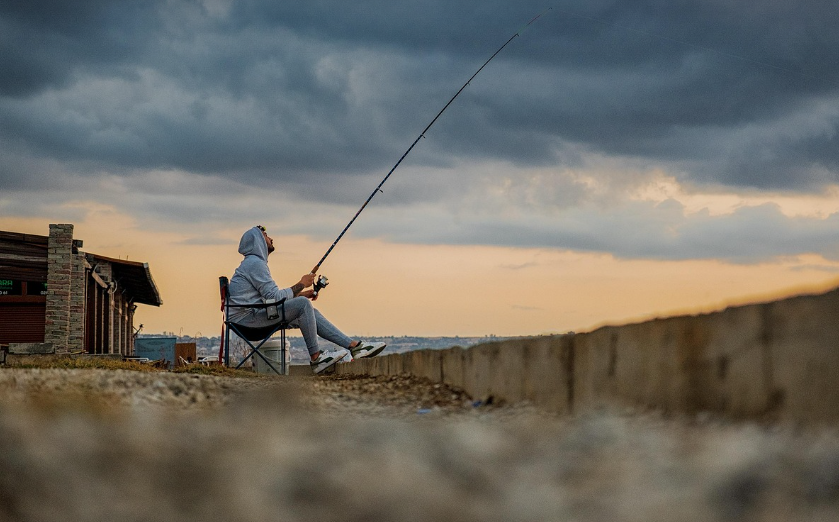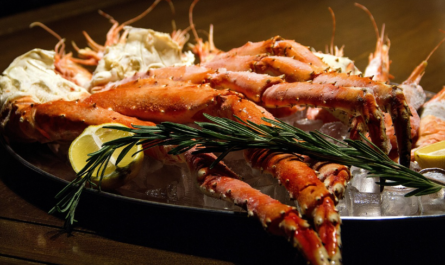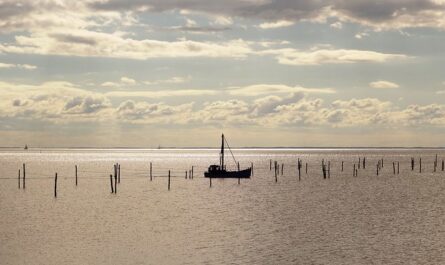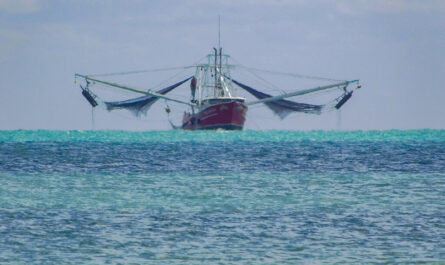Stretching from the icy waters off Newfoundland to the temperate seas bordering Western Europe, the North Atlantic Ocean has long served as a vital resource for coastal communities and global fisheries alike. Over centuries, cod, herring, mackerel, haddock, and other species have sustained livelihoods, shaped cultures, and supported entire economies. Yet intensified industrial fishing methods, climate change, and habitat degradation now threaten to upset the delicate balance of this marine ecosystem. Sustainable fishing practices are crucial, not only to safeguard the region’s biodiversity but also to ensure that future generations can continue to depend on the North Atlantic for food, income, and cultural heritage.
This comprehensive guide explores the state of fisheries in the North Atlantic, identifies the principal challenges confronting the region, and outlines innovative strategies to reconcile human needs with marine health. Drawing on science‑based policy, community engagement, and technological innovations, these sustainable approaches offer a blueprint for preserving both the ocean’s vitality and fishing communities’ well‑being.
1. The North Atlantic’s Ecological and Economic Significance
1.1 Biodiversity and Ocean Currents
The North Atlantic is influenced by the Gulf Stream and the North Atlantic Drift, which moderate temperatures and distribute nutrients across vast distances. This dynamic system fosters high primary productivity—phytoplankton blooms that support complex food webs. Sea birds, marine mammals, and large predator fish depend on abundant baitfish and invertebrates, forming a rich tapestry of marine life.
From the bountiful Grand Banks off eastern Canada to the Norwegian Sea’s rich plankton grounds, the region’s ecosystems sustain key commercial species such as Atlantic cod, haddock, pollock, and herring. These fish stocks once seemed boundless, fueling centuries of fishing traditions in coastal nations including Canada, the United States, Iceland, Norway, Denmark (particularly Greenland and the Faroe Islands), and multiple EU countries.
1.2 Fishing Communities and Cultural Heritage
Small‑scale coastal fisheries, from the cod fishermen of Newfoundland to the artisanal line‑fishers of Norway’s fjords, have historically shaped cultural identities. Tales of nor’easters, fishing seasons, and generational knowledge connect families to the sea. Yet commercial pressures, environmental shifts, and regulatory changes have transformed many fishing towns, driving consolidation or collapse if resources are depleted.
Beyond local livelihood, the North Atlantic fish harvest supplies global markets with seafood, fueling demand for whitefish filets, salted cod, fish meal, and other products. Thus, sustainable fishing in the North Atlantic is not merely a regional concern—it resonates in dinner plates and supply chains worldwide.
2. Challenges Facing North Atlantic Fisheries
2.1 Overfishing and Bycatch
Historically, many North Atlantic stocks were heavily fished. The iconic collapse of the Newfoundland cod fishery in the early 1990s, triggered by overfishing and mismanagement, stands as a cautionary tale. Intense fishing pressure can erode a stock’s reproductive capacity, with cascading effects on predator–prey relationships.
Bycatch—the unintended capture of non‑target species—further harms ecosystem balance. Dolphins, seabirds, sharks, and juvenile fish often fall victim to indiscriminate gear. Balancing efficient harvests with selective methods remains a major hurdle.
2.2 Climate Change and Habitat Alteration
Rising sea temperatures and shifting ocean currents directly impact fish distribution, migration patterns, and spawning behaviors. For instance, warming waters have prompted Atlantic mackerel and herring to move further north, affecting the distribution of fishing grounds and igniting disputes over quota allocations among neighboring countries.
Acidification from increased atmospheric CO₂ threatens calcifying organisms like mollusks and certain plankton, undermining the foundation of marine food webs. Meanwhile, coastal development, pollution, and bottom trawling degrade essential habitats—seagrass beds, coral reefs, and rocky substrates—that nurture juvenile fish.
2.3 Illegal, Unreported, and Unregulated (IUU) Fishing
Despite concerted governance efforts, illegal fishing remains a persistent issue. IUU fishing undermines legitimate operations, skews stock assessments, and distorts market competition. Flags of convenience, transshipping at sea, and falsified catch documentation all complicate enforcement in the open ocean, where patrol resources can be limited.
2.4 Socioeconomic Pressures and Market Demand
Consumers worldwide seek affordable seafood, driving high demand for species like cod, haddock, and shrimp. This can incentivize overcapitalization in fishing fleets, with vessels racing to catch finite resources. Meanwhile, small‑scale fishers may struggle to compete with industrial fleets that deploy advanced technology and enjoy economies of scale. Policy changes that tighten quotas or close seasons to rebuild stocks can impose economic hardship on communities lacking alternative income streams.
3. Governance and Collaborative Frameworks
3.1 Regional Fisheries Management Organizations (RFMOs)
In the North Atlantic, bodies such as the Northwest Atlantic Fisheries Organization (NAFO) and the North East Atlantic Fisheries Commission (NEAFC) coordinate international fishery management. They set total allowable catches (TACs), allocate quotas among member states, and oversee scientific assessments. Effective RFMOs rely on consensus, robust scientific data, and compliance mechanisms to deter overfishing.
3.2 The Common Fisheries Policy (CFP) of the European Union
The CFP aims to ensure that fishing and aquaculture are environmentally, economically, and socially sustainable within the EU. Key reforms over recent decades established maximum sustainable yield (MSY) targets for fish stocks, introduced discard bans to minimize waste, and promoted regionalized decision‑making. Critics, however, argue that implementation gaps remain, and controversies linger over how strictly quota allocations adhere to scientific advice.
3.3 Bilateral and Multilateral Agreements
Coastal states sometimes negotiate agreements for shared stocks, such as the so‑called “mackerel wars” that pitted Iceland, the Faroe Islands, Norway, and the EU against each other over rapidly shifting mackerel populations. These negotiations underscore the complexity of balancing scientific evidence, national interest, and economic imperatives. A stable, equitable deal requires clear stock assessments, dispute resolution mechanisms, and willingness among parties to compromise.
4. Science‑Based Management: The Cornerstone of Sustainability
4.1 Stock Assessments and Catch Limits
Accurate, timely stock assessments form the backbone of sustainable management. Scientists use trawl surveys, acoustic monitoring, and fishery‑dependent data to estimate biomass, recruitment, and fishing mortality rates. Mathematical models then inform recommended catch levels, which, if followed, align with the principle of maximum sustainable yield or more precautionary targets.
4.2 Precautionary and Ecosystem‑Based Approaches
Many experts advocate ecosystem‑based management (EBM). Rather than focus on a single stock in isolation, EBM considers predator–prey dynamics, habitat needs, and external factors like climate variability. Precautionary reference points and harvest control rules can automatically adjust quotas when stock indicators deteriorate. This adaptability helps avoid crises like the Atlantic cod collapse of the past.
4.3 Improved Data Collection and Monitoring
Electronic monitoring (EM), vessel tracking systems, and DNA-based techniques for species identification can enhance transparency. Inshore fishers, scientists, and citizen initiatives collaborate on data collection, bolstering sample sizes for stock assessments. Real‑time data on catches and discards facilitate swift policy adjustments if early warning signs emerge.
5. Gear Innovations and Selective Fishing Methods
5.1 Bycatch Reduction Devices
Excessive bycatch erodes biodiversity and wastes marketable fish. Innovations like turtle excluder devices (TEDs) in shrimp trawls, escape panels in lobster traps, and sorting grids in demersal trawls help non‑target species escape. In the North Atlantic, mesh size regulations and flexible sorting grids can reduce juvenile cod catches, aiding stock recovery.
5.2 Hook and Line, Trap, and Pot Fisheries
Compared to large‑scale trawling, hook‑and‑line techniques or pot fisheries often yield more selective captures. Community‑based fishers using handlines or jigging gear can adapt swiftly to local stock conditions, targeting healthy populations while minimizing bycatch. Although lower in volume, these artisanal practices can fetch premium prices for high‑quality, sustainable seafood.
5.3 Fishing Effort Control
Time–area closures shield spawning aggregations or juvenile nurseries from fishing during vulnerable periods. Dynamic management, informed by real‑time data on temperature or plankton blooms, can direct fleets away from sensitive areas. Technological solutions, including GPS tracking, automated logbooks, and enforced “move-on” rules upon encountering large bycatch, help reduce ecological harm.
6. Socioeconomic Dimensions and Community Engagement
6.1 Empowering Coastal Communities
Sustainability initiatives must balance ecosystem recovery with economic stability for fishing communities. Governments and NGOs can facilitate:
- Diversification: Encouraging sea tourism, direct‑to‑consumer fish sales, or adding value through processing and branding.
- Capacity Building: Training fishers in selective gear use, data recording, and business resilience.
- Infrastructure Support: Investing in modern harbors, cold storage, and distribution networks enables fishers to reach broader markets.
6.2 Consumer Awareness and Certification
Labels like Marine Stewardship Council (MSC) certification guide consumers toward sustainably sourced seafood. Retailers often demand proof of responsible practices, incentivizing fishers to meet standards. Furthermore, restaurant and supermarket campaigns, social media, and eco‑conscious influencers amplify consumer interest in transparent, high‑quality products.
6.3 Co‑Management and Stakeholder Collaboration
Collaborative management committees—blending fishers, scientists, and regulators—can foster trust. Fishers’ local ecological knowledge informs science, while scientists provide stock assessments and robust sampling designs. By involving fishers in decision‑making, outcomes are more socially acceptable and compliance tends to improve.
7. Climate Adaptation and Future Outlook
7.1 Addressing Range Shifts
As warming waters drive certain species northward, coastal states and RFMOs must revise quotas, gear regulations, and bilateral agreements. Conflicts over “newly” arrived fish can be diffused by science‑backed frameworks that partition catches proportionate to resource shifts. Scenario modeling can predict future distribution and highlight likely flashpoints.
7.2 Reducing Greenhouse Gas Emissions
Fishing fleets contribute to emissions via fuel consumption, and climate change intensifies weather extremes, complicating fishing schedules. Innovations in low‑emission propulsion (hybrid or electric vessels), streamlined hull designs, and localized supply chains can shrink the industry’s carbon footprint while maintaining profitability.
7.3 Blue Economy Opportunities
Expanding offshore wind farms, aquaculture, and marine biotechnology could offer alternate economic prospects. However, careful spatial planning is vital to ensure synergy rather than conflict. Marine protected areas (MPAs), artificial reefs, and aquaculture zones can benefit fish stocks if carefully designed, but require cross‑sector coordination and ecological impact assessments.
8. Case Studies of Effective Sustainable Practices
8.1 Iceland’s ITQ (Individual Transferable Quota) System
Iceland pioneered an ITQ system, allocating fishermen a share of total allowable catch. Proponents argue it curbs overcapacity, incentivizes stewardship (since quota holders see long‑term value in stock health), and fosters economic efficiency. Critics highlight risks of quota concentration, marginalizing small‑scale operators. Nevertheless, Iceland’s cod stocks have rebounded significantly under this approach, offering lessons for other North Atlantic nations.
8.2 Norway’s Collaborative Efforts
Norway’s fishery policies emphasize strong scientific input via the Institute of Marine Research, real‑time monitoring, and co‑management councils. Enforcement of discards ban, along with refined gear regulations, minimized bycatch and boosted certain groundfish stocks. Norway also invests heavily in research on climate impacts, ensuring adaptive frameworks.
8.3 Community Fisheries in North America
In Maine (USA), local cooperatives for lobster fisheries operate with state-imposed catch limits and trap limits. Such measures, combined with v‑notch protections for egg-bearing females, maintain stable lobster populations despite warming Gulf of Maine waters. This success story illustrates how local stewardship and regulatory alignment can sustain both stocks and livelihoods.
9. The Path Forward: An Integrated Vision
Sustainable fishing in the North Atlantic hinges on a confluence of robust science, equitable governance, technological innovation, and social resilience. Key pillars include:
- Adaptive Management
Real‑time data collection and flexible quota adjustments can respond to shifting stock statuses and climate anomalies. Automated monitoring (electronic observer systems) and prompt enforcement deter illegal practices. - Ecosystem Protection
Establishing MPAs, closed spawning areas, and gear restrictions fosters biodiversity. Habitat restoration (e.g., seagrass planting) and micro-habitat structures enhance the productivity of coastal zones. - Community Engagement
Fishers must be partners, not passive recipients of top‑down policies. Participatory decision‑making, capacity-building grants, and assured economic transition programs (where needed) ensure local buy‑in. - Interdisciplinary Research
Climate science, fisheries biology, oceanography, and social sciences must integrate to forecast future distributions, economic shocks, and cultural shifts. This synergy drives holistic policy solutions. - International Cooperation
Cross‑border collaboration under RFMOs, bilateral treaties, and knowledge exchange (e.g., best practices for bycatch reduction) builds trust and fosters consistent sustainability standards.
10. Conclusion
The North Atlantic Ocean stands at the nexus of human aspiration and ecological necessity. For centuries, its fish have nourished coastal towns, empowered trade routes, and spawned cultural narratives. Yet the toll of overfishing, environmental disruption, and climate unpredictability now forces a profound reckoning. Sustainable fishing practices—anchored in science, refined by technology, and guided by equitable governance—offer a pragmatic path forward.
By balancing catch limits and habitat protection, embracing gear innovations to reduce bycatch, and forging respectful collaboration among stakeholders, we can replenish fish populations, bolster food security, and preserve marine biodiversity. Equally important, these measures secure a future for small‑scale fishing communities whose heritage is inextricably tied to the ocean’s rhythms. Consumer awareness and market demand for traceable, responsibly sourced seafood further catalyze positive change, creating a virtuous cycle that rewards conscientious producers.
In this pursuit, every action matters. When governments align regulations with scientific advice; when fishers adapt their practices to protect spawning grounds; when international bodies coordinate with genuine commitment; when consumers choose responsibly harvested fish—the North Atlantic’s waters stand a chance to remain fertile, resilient, and abundant. Generations yet to come may then cast nets in the same storied seas, confident that the marine tapestry woven over millennia endures, robust and vibrant, under our collective stewardship.



